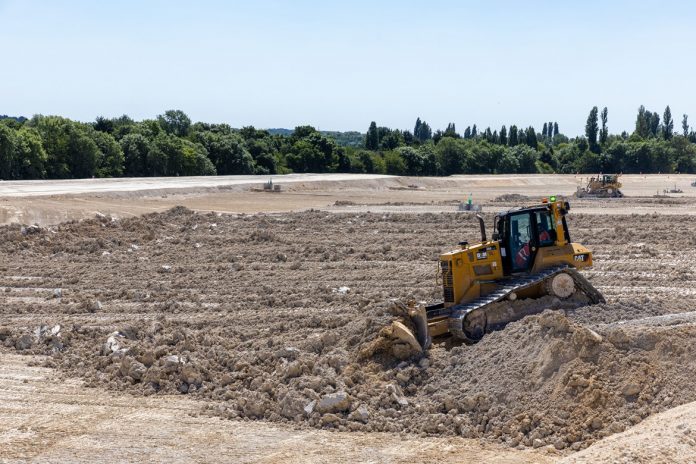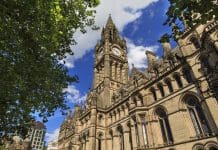The HS2 Chiltern grassland transformation project is using excavated materials from the Chiltern tunnels to create chalk grassland in the surrounding site
The HS2 Chiltern grassland transformation project on HS2’s largest construction site has celebrated laying out the first million cubic metres of reused chalk around the south portal of the Chiltern tunnel.
The plans have been developed by HS2’s main works contractor, Align – a joint venture formed of Bouygues Travaux Publics, Sir Robert McAlpine, and VolkerFitzpatrick – working with design partners Jacobs, Rendel-Ingerop, and LDA Design, that form Align D.
The Chiltern excavation project will see 2.6 million cubic metres of chalk removed by giant tunnelling machines
Two giant tunnelling machines – named Florence and Cecilia – are currently around 4 miles into their journey under the Chilterns. The material excavated is mixed with water to form a slurry before being pumped out of the tunnel.
It is then processed at a slurry treatment where flint and water are extracted, to leave chalk cake which is then laid out on site – together with recycled concrete and aggregates from construction works to create 127 hectares of new chalk grassland, woodland, wood pasture and wetland habitats.
Ninety hectares of chalk grassland will be seeded into re-profiled soil layers. This will sit alongside new areas of woodland, wood pasture and wetlands, including almost 65,000 trees and shrubs of 32 species and nearly 3.5km of new hedgerows.
Chalk grassland can host a wide variety of biodiversity
Chalk grassland – a type of calcareous grassland – is habitat of international conservation importance mainly found on limestone and chalk downlands of south-east England and the Isle of Wight.
Lime-rich, but low in nutrients, the thin soil holds little water and drains well. These conditions encourage a huge variety of smaller herbs and wildflowers and over 40 plant species can be found in one square metre of grassland, including some of the UK’s rarest orchids as well as highly diverse invertebrate populations. Only 700 hectares of chalk grassland exist across the whole of the Chilterns AONB.
Around 4.5km of new footpath, cycling and horse-riding routes will give the public areas to large parts of the site, which sits between the Colne Valley Regional Park and the Chilterns AONB.
Field trials are in preparation ahead of final seeding, and planting of trees and shrubs in 2025.
HS2 Ltd’s environment director Peter Miller said:
“The south portal project is one of the most important parts of our Green Corridor programme to establish better connected, sustainable and biodiverse landscapes along the route of the new railway and will contribute substantially to HS2’s carbon reduction target.
“It’s great to see how much chalk has already been laid on site and I look forward to seeing the site completely transform over the coming years.”



![[VIDEO] HS2 completes 4,600-tonne viaduct slide across M6 The HS2 team completed a 17-hour long operation sliding the viaduct structure across the M6 without closing the motorway](https://www.pbctoday.co.uk/news/wp-content/uploads/2025/12/M6-South-viaduct-slide-taking-place-across-a-live-motorway-December-2025-218x150.jpg)










![[VIDEO] Heathrow’s third runway plan wins out over Arora London, United Kingdom – May 31, 2023: A commercial airliner taking off at London's Heathrow Airport, representing plans for a third runway](https://www.pbctoday.co.uk/news/wp-content/uploads/2025/11/iStock-2143084103-218x150.jpg)